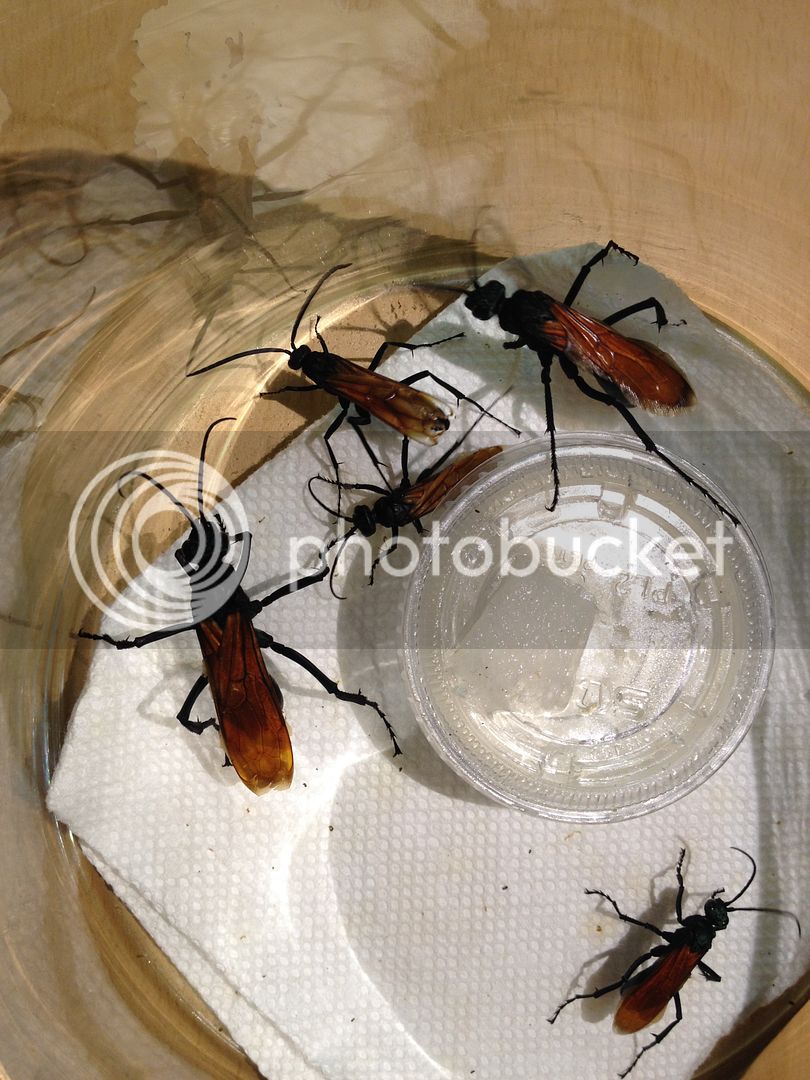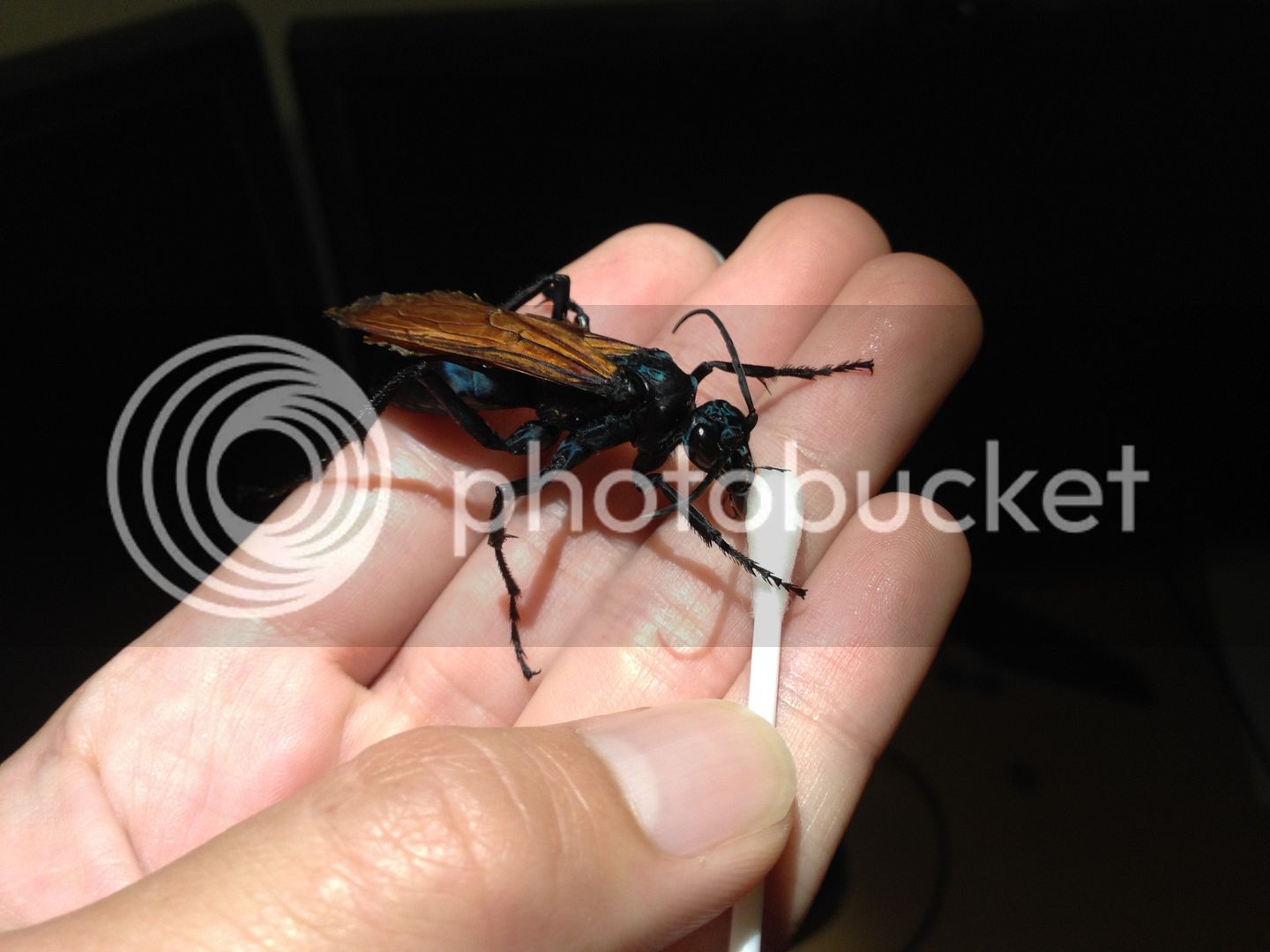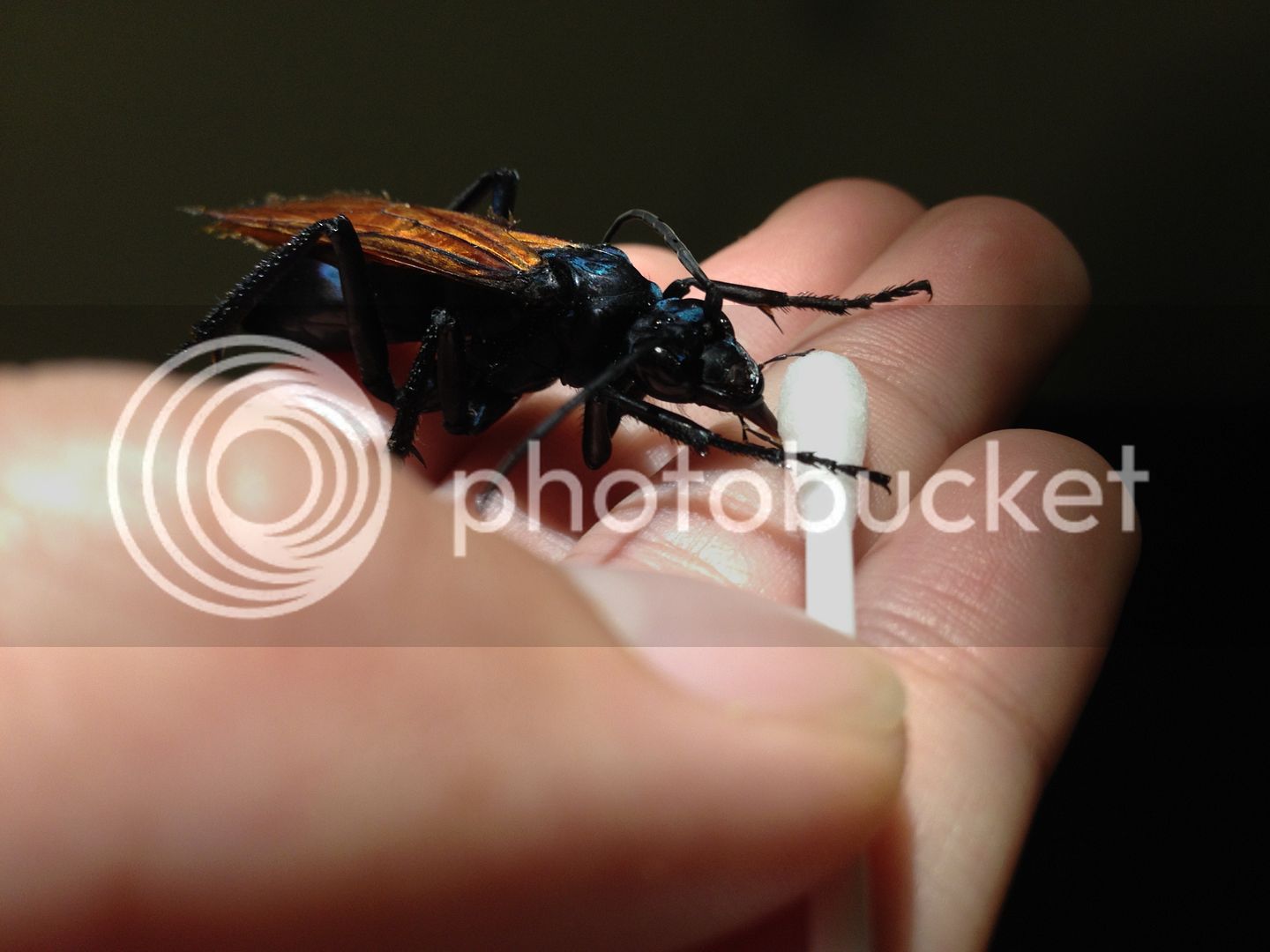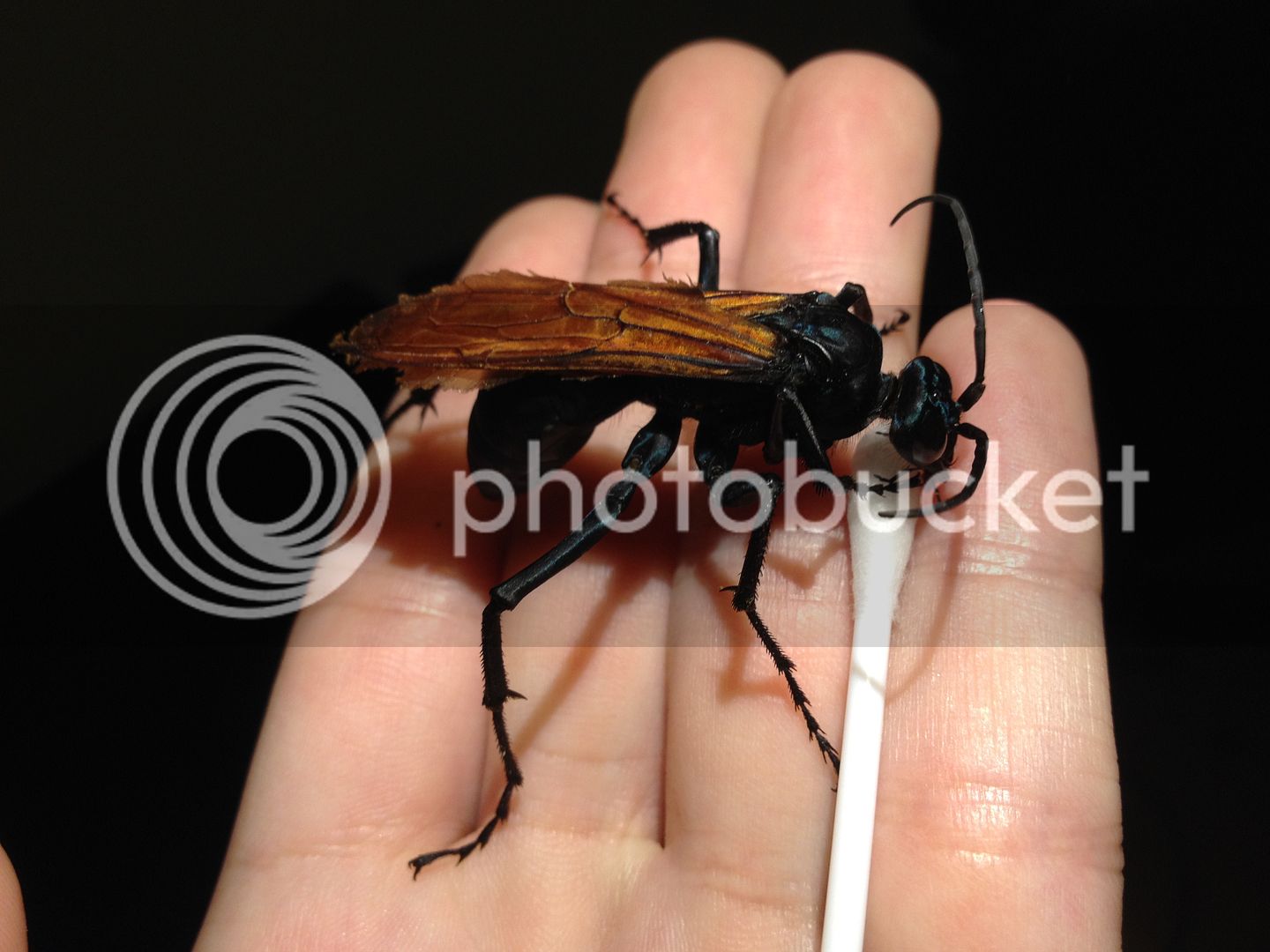Ranitomeya
Well-known member
Went collecting in a canyon and caught a few tarantula hawks. Here's a male lapping up sugar solution from a q-tip. He's half the size of the largest female I captured.
I am most definitely not feeling brave enough to handle a large female whose stinger is long enough to pierce straight through my finger were it capable of going through bone.
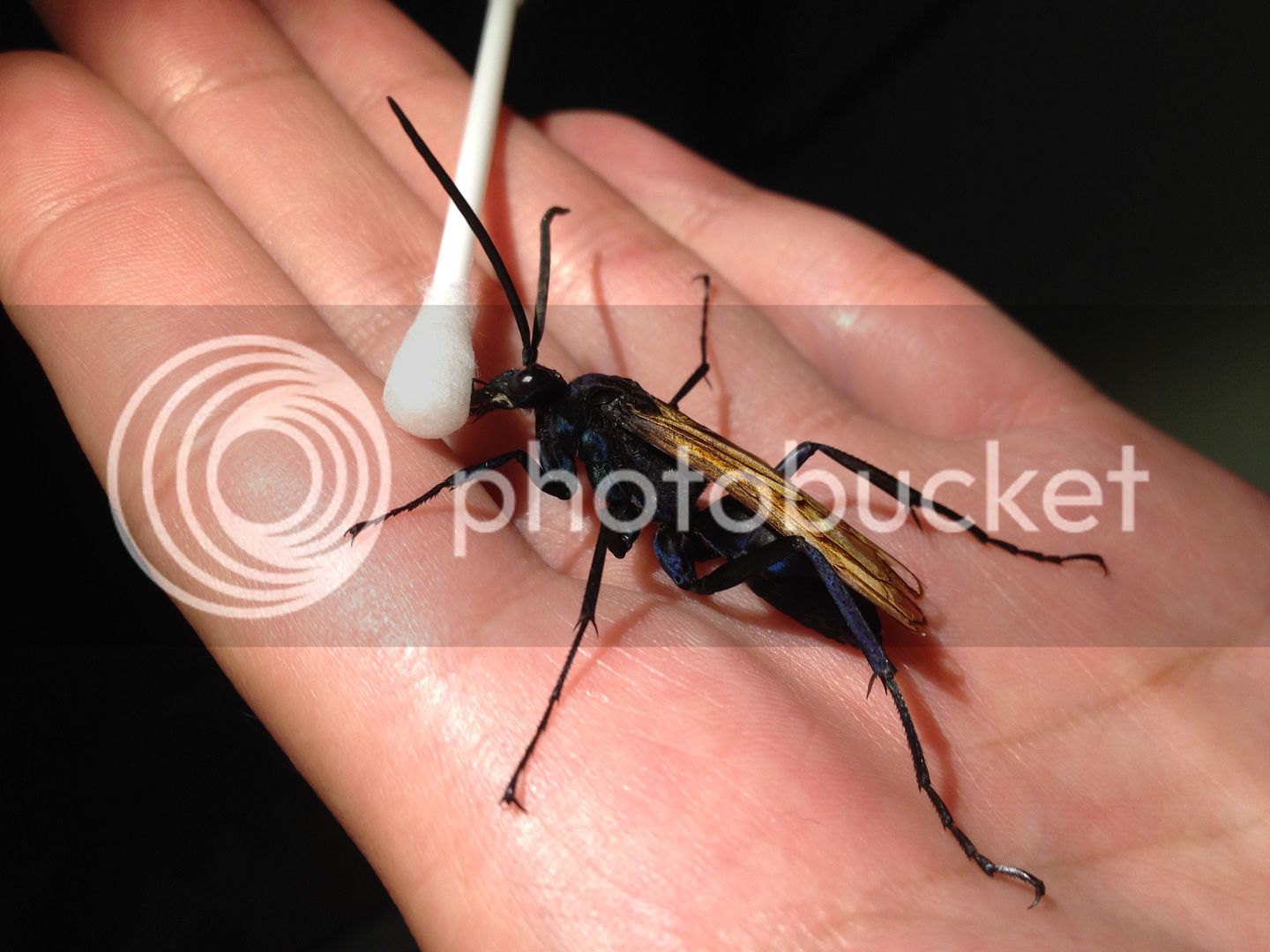
I am most definitely not feeling brave enough to handle a large female whose stinger is long enough to pierce straight through my finger were it capable of going through bone.





